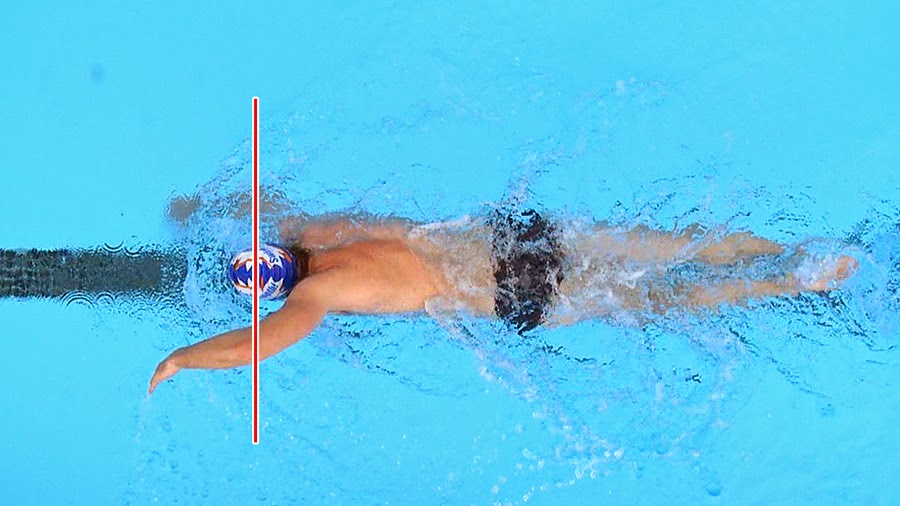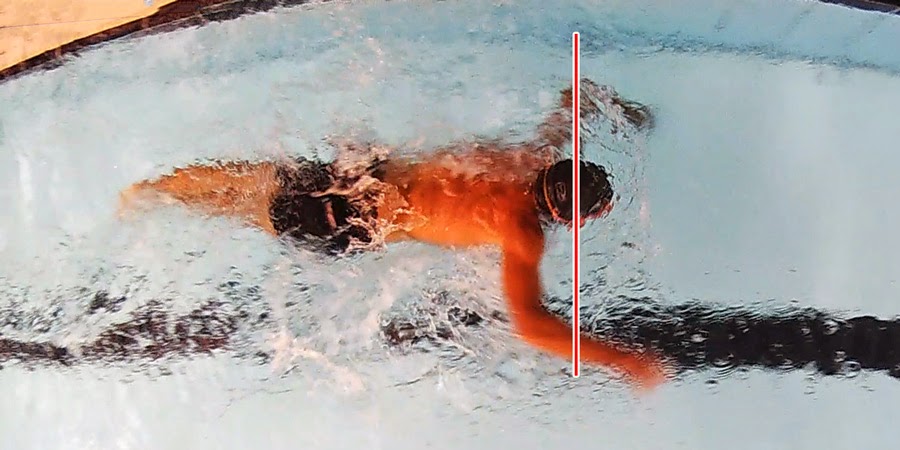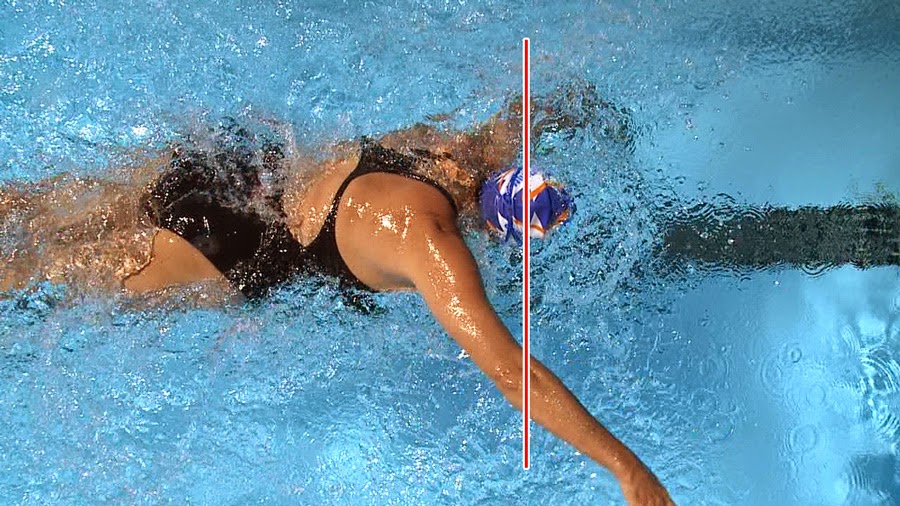You might have heard of something called Front Quadrant Swimming which has to do with the timing of your freestyle stroke. It’s widely recognised as being an efficient way to swim and something that you should use in your own stroke technique but there’s a lot of confusion about what it actually means:
If you drew two lines, one through the swimmer’s head and one at water level you would create four quadrants:
Front quadrant swimming simply means that there is always one of your hands in one of the front quadrants (1 and 2) at any one point in time. Or, put even more simply, when your hands pass above and below the water, that should happen in front of your head, not behind it.
Let’s look at some examples. Here’s elite swimmer Jono Van Hazel from Perth:
Jono is a classic smooth and as you can see his hands pass in front of his head with classic front-quadrant timing. Jono’s got brilliant stroke timing which is one reason why he looks so smooth when he swims. Notice how when the recovering arm is passing the head the lead hand has started the stroke and is catching the water – it’s not pausing out front and doing nothing (more on that below):
You can see more of Jono swimming here: youtube.com/watch?v=s3HhNlysFDs
Interestingly, even swimmers using very fast stroke rates normally still have front quadrant timing. Here’s former triathlon world champion Tim Don swimming at a rapid 90 strokes per minute:
It’s closer but Tim’s arm s are still clearly passing in front of the head. Also 7 Time World Marathon Swimming Champion Shelley Taylor Smith (see clinics above) who was also famous for using a high stroke rate:
Here’s an example of a swimmer with the arms passing behind the head, breaking the front-quadrant rule:
Clare’s arm is collapsing downwards whilst she is breathing giving her no support in front of her head and making breathing much harder than it needs to be. If you swallow water when you breathe this is likely to be the reason – try the one-two-stretch mantra here.
Taking It To The Extreme
The confusion with front-quadrant timing is that some swimmers believe it means a full catch-up at the front of the stroke, where the hands pretty much meet at the front:
To achieve this position you must hold the hand out in front of you with a long pause-and-glide whilst the other hand fully catches it up. This long gap between strokes (we call it Overgliding) is very inefficient as you simply decelerate in the water whilst trying to glide and then have to use the next stroke to get up to speed again. Pause-and-glide timing also leads to common stroke flaws such as dropping the wrist and putting on the brakesand the overglider kickstart.
This catch-up timing is technically still front quadrant as the hands do pass in front of the head but it is really taking thing s to the extreme – it is not what was meant by front-quadrant-timing when the term was created.
The Fear Of Windmilling
The idea with front quadrant timing is that it is trying to avoid a full-windmill in the stroke where the hands are at near opposite positions resulting in the hands passing behind the head:
The key thing here is that even if you tried to do this deliberately you would find it very hard to do – it feels very extreme when you do it and it’s unlikely you’ll do it naturally, especially if you’ve been working on your stroke technique for a while.
Try It In Front Of A Mirror!
If you’re finding thinking about what both arms are doing in the stroke at the same time a little mind bending, don’t worry, it is! One of the best ways to get a feel for it is to stand in front of a mirror, bend forwards slightly and perform some practise strokes.
Try and reproduce your natural stroke as closely as possible and see how your hands pass each other. If they pass in front of the head (even if only slightly in front like Tim and Shelley) then you’re doing fine!
Conclusion
Our central point here is that the danger of windmilling is much over-stated. In most instances where the hands pass behind the head the reason is related to breathing and poor awareness of what the lead hand is doing (as with Clare above), not because the swimmer is windmilling in the traditional sense.
A far greater risk is taking things to the opposite extreme and adopting a full catch-up style of stroke. This is a very inefficient stroke style and a very difficult habit to break once developed.
Instead, work on developing all aspects of your stroke technique in a balanced way including: breathing, body position, alignment, kick, catch/pull technique and rhythm. Do that and the resultant stroke is almost guaranteed to give you good front-quadrant timing without you directly focusing too much on it.
Swim Smooth!








